The peak of Singapore’s raptor migration will soon be upon us. From October to December, large numbers of migratory raptors will pass through Singapore, as they move from their breeding grounds in temperate northeast Asia to tropical southeast Asia (Bildstein, 2006). This constitutes autumn migration, where birds migrate southwards to avoid frigid winters in their home grounds. Around March to May, the birds will head back north to breed, but fewer species seem to pass through Singapore and in smaller numbers. Different species of raptors have been observed to peak in their passage through Singapore in different months.
During this period, you’ll find birders heading to popular raptor watching spots such as Henderson Waves, Telok Blangah Hill Park and Tuas to try their luck at snagging rarer ticks, or to enjoy viewing the large number of raptors migrating overhead. At the same time, you’ll find posts popping up on local Facebook pages requesting for raptor identification. While raptor plates in field guides are handy for identification, good guides can be costly and those short on cash or new to the hobby may not be keen on making such purchases yet. Even so, while guides have detailed illustrations of the raptors in full colour with all identification features clearly indicated, migrating raptors often thermal high in the sky and our grainy, backlit pictures may look like this:
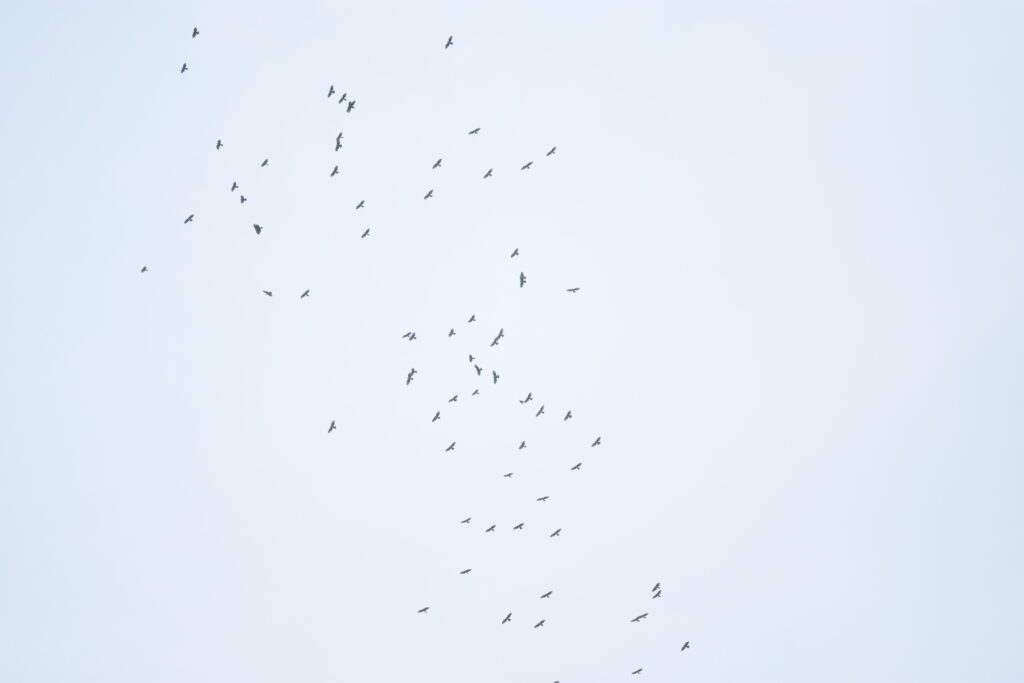
So how do we tell what’s what?
Equipped with my trusty but outdated Nikon 300mm F4 (no teleconverter!), my photos of migrating raptors may be the worst of the lot. Thankfully, you do not need amazing photos to identify the dots passing overhead. This article will feature five common raptors: Changeable Hawk Eagle (Nisaetus cirrhatus), Crested Honey Buzzard (Pernis ptilorhynchus), Chinese Sparrowhawk (Accipiter soloensis), Japanese Sparrowhawk (Accipiter gularis) and Black Baza (Aviceda leuphotes), and we’ll go through some general pointers on how to differentiate what’s what. Bar charts are also included for the migratory species, to highlight the peak periods for each.
[Update 17/10/22: Bar charts from our migrant bar charts were added to highlight the peak periods for the migratory raptors listed here.]
Changeable Hawk Eagle (Nisaetus cirrhatus)
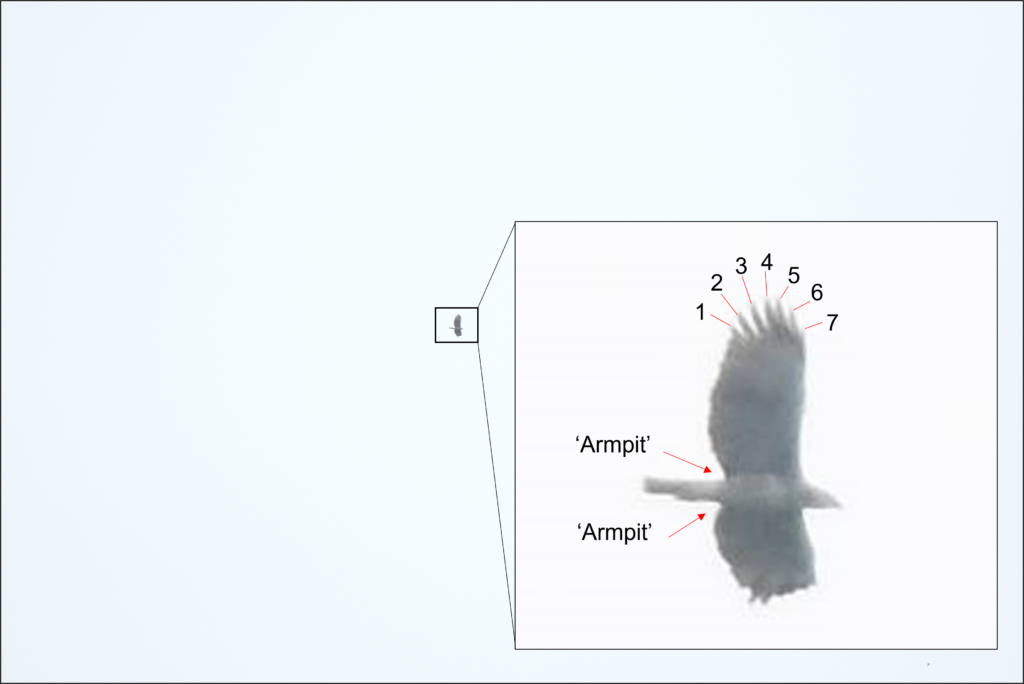
The Changeable Hawk Eagle is a medium sized raptor with seven ‘fingers’. Some individuals undergoing moult may have less than seven ‘fingers’, but can still be differentiated by its round wings, which result in a silhouette with pronounced ‘armpits’. This species can come in a dark or pale morph. This is an uncommon resident species that may often be seen while observing migratory raptors.
Crested Honey Buzzard (Pernis ptilorhynchus)
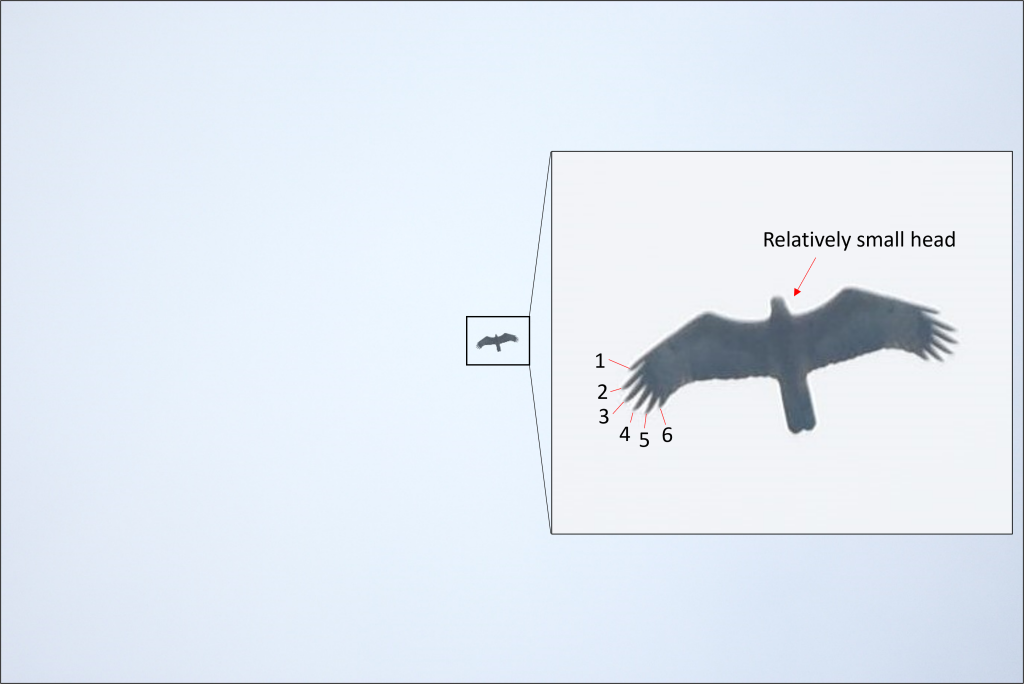
The Crested Honey Buzzard is another medium sized raptor with six ‘fingers’. The migratory subspecies, Pernis ptilorhynchus orientalis, is commonly referred to as Oriental Honey Buzzard. If moulting, individuals may also have fewer than six ‘fingers’. It can be differentiated from other medium sized raptors by its relatively small head and less rounded wings. The Crested Honey Buzzard also comes in various morphs such as light, dark, and an array of intermediate morphs (DeCandido et al., 2015). If you would like to take a deep dive into Crested Honey Buzzard identification, you can check out DeCandido et al. (2015).
Chinese Sparrowhawk (Accipiter soloensis)
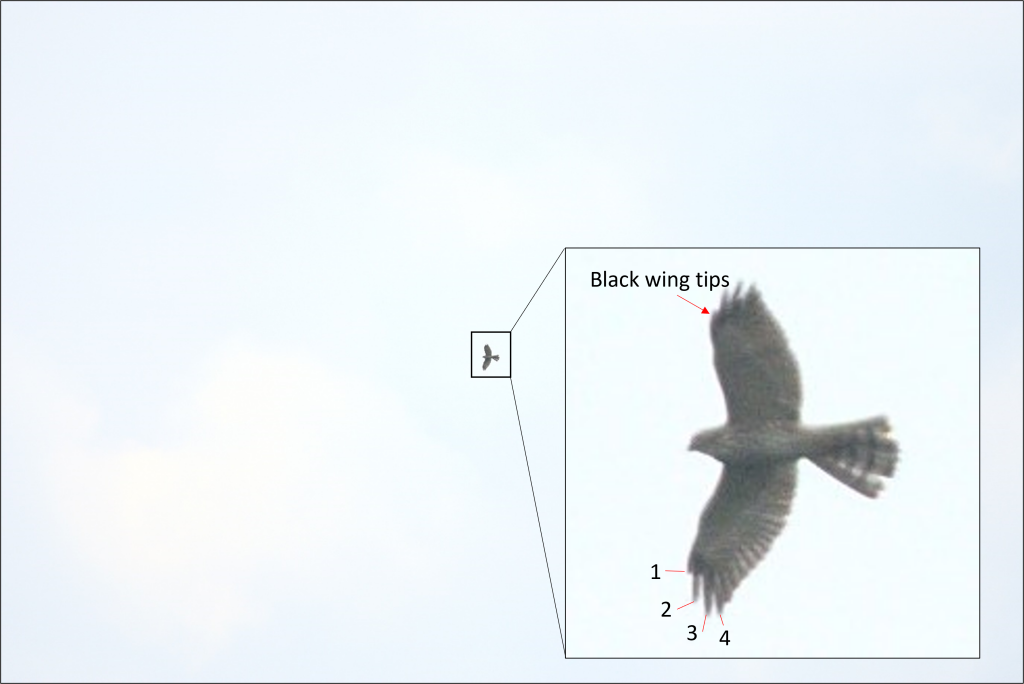
The Chinese Sparrowhawk is an Accipiter, a globally distributed genus typically known as hawks. Accipiters are generally smaller than the two raptors discussed above, resulting in a very different general impression of their size and shape. This species has four ‘fingers’, tipped black. More information on how to identify males, females and juveniles of the species can be found on our species page here.
Japanese Sparrowhawk (Accipiter gularis)
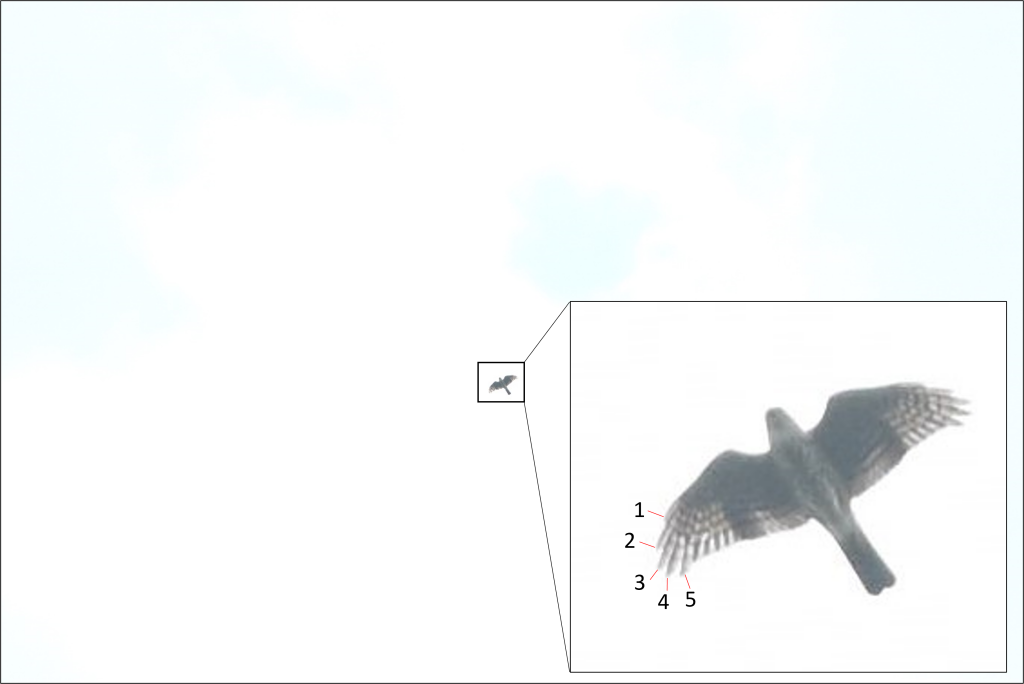
The Japanese Sparrowhawk is of similar size to the Chinese Sparrowhawk but can be told apart as it has five ‘fingers’ instead of four. More information on identification of males, females and juveniles can also be found on the species page, here. More information on telling apart Accipiter species can be found in DeCandido et al. (2014).
Black Baza (Aviceda leuphotes)
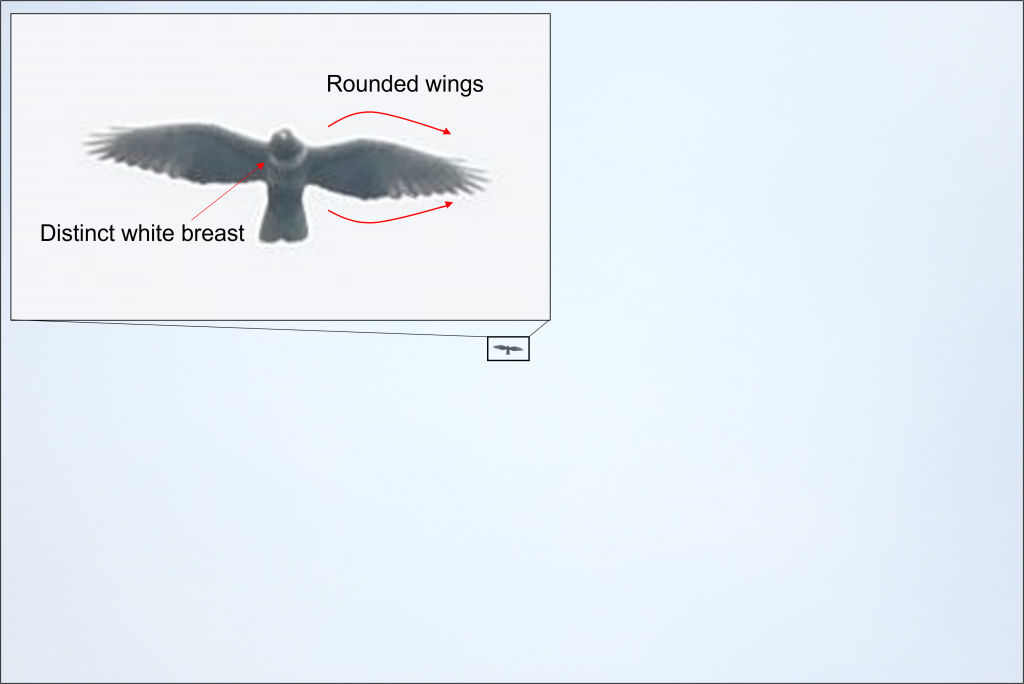
The Black Baza is of similar size to the sparrowhawks discussed above but differs by its wing shape, which is more rounded than that of the sparrowhawks, resembling paddles. It is also distinctly coloured, with a prominent band of white across the upper breast and thinner black, white, and chestnut stripes across the lower breast and belly. This species is mostly seen from November onwards (eBird, n.d.).
We hope this article has served as a useful crash course on identification of common raptors we might encounter while raptoring in the coming months. Leave a comment below if you’d like us to cover other species!
Happy raptoring and hope to see everyone’s lists on eBird!
Acknowledgements
Thanks to Jin Rong and the team (Dillen, Francis, Keita, Movin and Raghav) for their comments on the article and to the experienced birders who taught me how to identify raptors over the years.
References
Bildstein, K. L. (2006). Migrating raptors of the world: their ecology & conservation. Cornell University Press.
DeCandido R., Nualsri C., Siponen, M., Sutasha, K., Pierce A., Murray, J. & Round, P. D. (2014). Flight identification and plumage descriptions of six Accipiter species on southbound migration at Khao Dinsor, Chumpon province, Thailand. BirdingASIA, 21(2014), 52-62. Link
DeCandido, R., Siponen, M., Smit, H., Pierce, A. & Allen, D. (2015). Flight identification and migration pattern of the Oriental Honey Buzzard Pernis ptilorhynchus orientalis in southern Thailand, 2007-2014. BirdingASIA, 23(2015), 27-33. Link
eBird. (n.d.). Black Baza. https://ebird.org/species/blabaz1/SG
